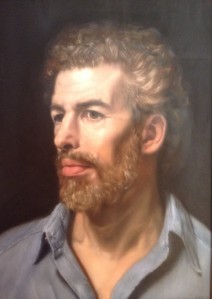Born to do Math 72 – Photon, Photon, and Away!
Scott Douglas Jacobsen & Rick Rosner
August 15, 2017
[Beginning of recorded material]
Rick Rosner: In
an expanding universe, a moving photon is moving away from – the farther and
longer it travels then the more it is moving into the neighbourhoods of
galaxies that are receding from its point of origin, so the longer it travels
the faster the galaxies or the average expansion velocity of space is relative
to where it came from.
So, it is going to be wretched. But that loss of energy—I
just read that there are many more photons than there are massive particles.
Particles that have rest mass. In every cubic centimetre, there are roughly 400
photons leftover from the Big Bang.
I guess from the Cosmic Microwave Background. Where the
average number of massive particles is one proton for every cubic metre, so
that means like 400 million times as many Big Bang photons or Cosmic Microwave
photons as there are protons.
That doesn’t even include all the photons that have emitted
since. Another place to hide disorder might be black holes. Where depending on
what the rules for black holes are, I mean, Stephen Hawking and people like him
have spent their careers debating the informational rules and black holes with
regards to information.
Whether information is lost when stuff falls into a black
hole, whether it eventually comes back out, does it come back out with any
amount of information that went in, in any way? Under IC, black holes aren’t
entirely black and can, maybe, be possibly seen as semi-independent information
processors.
So, not only do they, they might be sources of order rather
than additional information and order – rather than relentless black holes of
information, constantly destroying whatever gets close enough to fall into
them. So, one narrative framework for IC is that it might be good for talking
about the universe in the context of the universe being an order-generating
system in contrast to the random doomed-to-have-zero-information of the 20th
century. That’s it.
Authors[1]

Rick Rosner
American Television Writer
RickRosner@Hotmail.Com
Rick Rosner

Scott Douglas Jacobsen
Editor-in-Chief, In-Sight Publishing
Scott.D.Jacobsen@Gmail.Com
In-Sight Publishing
Endnotes
[1] Four format points for the session article:- Bold text following “Scott Douglas Jacobsen:” or “Jacobsen:” is Scott Douglas Jacobsen & non-bold text following “Rick Rosner:” or “Rosner:” is Rick Rosner.
- Session article conducted, transcribed, edited, formatted, and published by Scott.
- Footnotes & in-text citations in the interview & references after the interview.
- This session article has been edited for clarity and readability.
- American Psychological Association. (2010). Citation Guide: APA. Retrieved from http://www.lib.sfu.ca/system/files/28281/APA6CitationGuideSFUv3.pdf.
- Humble, A. (n.d.). Guide to Transcribing. Retrieved from http://www.msvu.ca/site/media/msvu/Transcription%20Guide.pdf.
License
In-Sight Publishing and In-Sight: Independent Interview-Based Journal by Scott Douglas Jacobsen is licensed under a Creative Commons Attribution-NonCommercial-NoDerivatives 4.0 International License.
Based on a work at www.in-sightjournal.com and www.rickrosner.org.
Copyright
© Scott Douglas Jacobsen, Rick Rosner, and In-Sight Publishing and In-Sight: Independent Interview-Based Journal 2012-2017. Unauthorized use and/or duplication of this material without express and written permission from this site’s author and/or owner is strictly prohibited. Excerpts and links may be used, provided that full and clear credit is given to Scott Douglas Jacobsen, Rick Rosner, and In-Sight Publishing and In-Sight: Independent Interview-Based Journal with appropriate and specific direction to the original content.
No comments:
Post a Comment